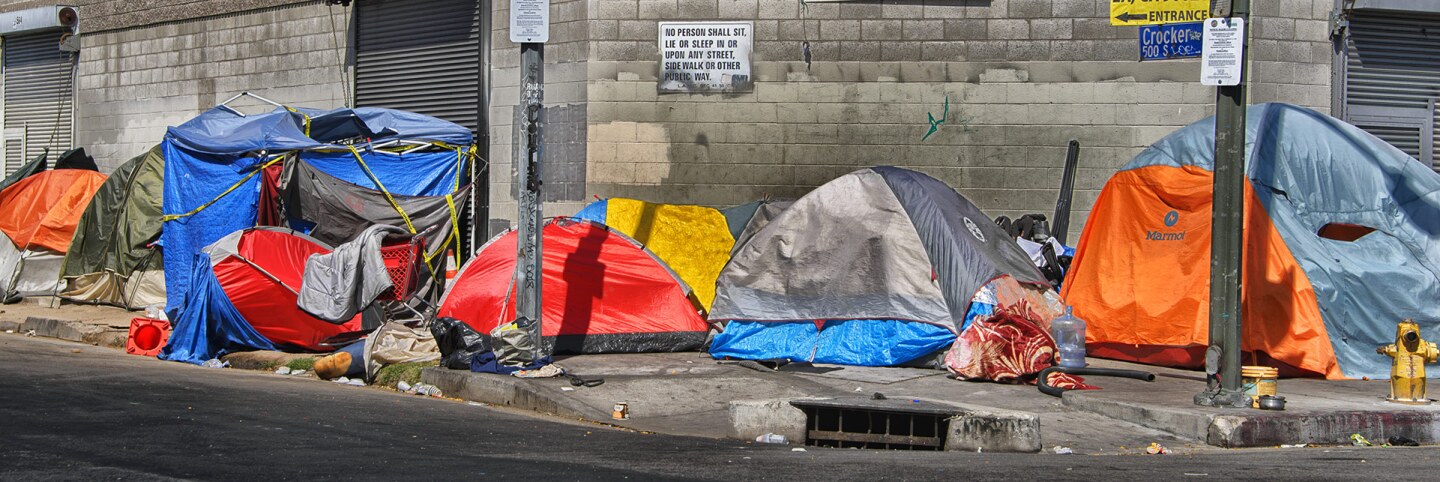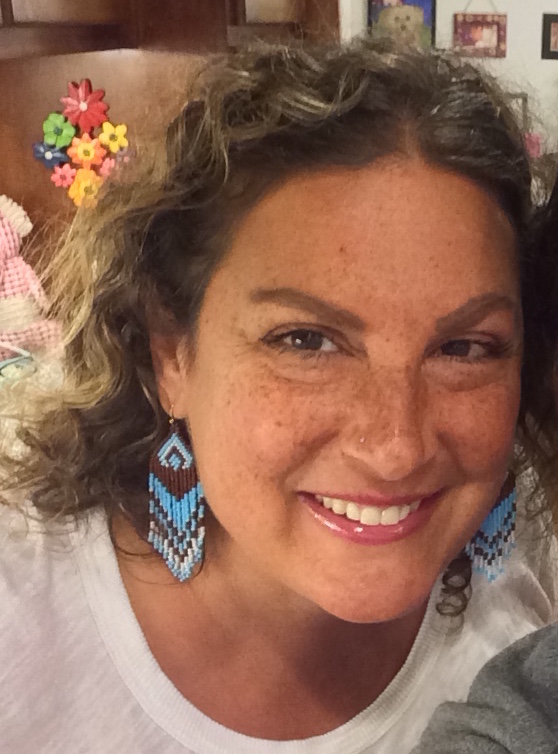
(5-3-21) How do you help someone who is addicted, seriously mentally ill and living on the streets in Los Angeles’ Skid Row?
Today’s guest blog comes from Dr. Susan Partovi, MD, who has been helping those on skid row streets in Los Angeles for more than 17 years and is the Medical Director for Homeless Health Care LA.
I would argue that she is more familiar with the problems and what needs to be done than most us, including directors of mental health organizations, civil rights lawyers in Washington D.C., and politicians drafting legislation. As of a 2019 count, the population of the Skid Row district was 4,757. Skid Row contains one of the largest stable populations (about 4,200–8,000) of homeless people in the United States
She needs to be heard.
Meet Skid Row’s Josephine
By Dr. Susan Partovi
Josephine is a drug user on skid row in her early 40’s with bipolar disorder. This means that she often has episodes of psychosis. She often trades sex for her drugs which has left her open to the savages of that lifestyle.
Since I first met her, she has become blind because she once was hit so hard that her retinas detached. She has acquired HIV. She often sees me for STD symptoms. Last week, I saw her with a huge bruise on her face. Her jaw looked broken. Sometimes I see her completely psychotic speaking in an unintelligible language. She sometimes comes in irate yelling at whomever and we calm her down. She has been hospitalized frequently for danger to self or danger to others and in and out of jail.
Well-Known By Those Trying To Help Her
Despite her injuries, Josephine refused to go with me to an emergency room to tend to her jaw and bruises. Fortunately, we have been able to connect her with outreach teams over the many years that I’ve been seeing her. She is well known by the Department of Mental Health’s HOME team who treat the Severely Mentally Ill (SMI) who are homeless.She was started on a long acting antipsychotic which does allow her more lucid times and acceptance of resources. She has a street medicine team that addresses her medical needs. And she has us at Homeless Health Care’s Center for Harm Reduction, where we try to address her acute medical needs and drug addictions.
We all do what we can for her, but she’s still on the streets of skid row, subject to beatings and rape. Why is she still on skid row, then?
She needs comprehensive mental health and drug treatment in a facility where she is unable to leave.
There are two ways to create progress. The law and funding. I don’t know how to increase funding for mental health treatment. But whoever does, needs to address funding for long term psychiatric treatment presently not funded by MediCaid or Medicare. Not all people living on skid row need to be in a locked facility. In fact, once stabilized, many can do well in “step down” facilities and Board and Cares. Many may also be able to live in their own apartment where there is adequate social support. We need more funding for all of these options.
Do you think Josephine wants to be homeless, getting beat up and raped constantly, addicted to heroin, meth and alcohol?
Would anyone in their right mind want this? I’m going to go out on a limb here and say emphatically, “No!”.
So why isn’t she conserved? Conservatorship is where a judge decides that someone is so incapable of taking care of themselves that they pose a constant danger to themselves or others and thus is appointed someone to make decisions for them.
If someone is brought to a hospital where they are qualified to hold someone against their will (called 5150 in California and can only last 72 hours), the psychiatrist needs to assess if this person is a harm to themselves, others or gravely disabled. These are the three conditions one can be 5150’d. Grave Disability is defined by California Law as someone as a result of a “mental health disorder or impairment by chronic alcoholism who is unable to provide for his or her basic personal needs for food, clothing or shelter.” This law was signed in 1967 and hasn’t changed since. Because the California state legal definition is so minimal, it allows for incredible elasticity in its interpretation. Thus, we all know that Josephine clearly cannot take care of herself, but she cannot be held against her will because in the moment that she says she is capable of going to a shelter, it is no longer legal to hold her against her will. And thus she is released to be beaten and raped, in and out of jail.
The California law on who is defined as Gravely Disabled needs to be reevaluated.
Colorado’s legal definition of a person with Grave Disability…”is incapable of making informed decisions about or providing for his/her essential needs without significant supervision and assistance from other people. As a result….he/she is at risk of substantial bodily harm, dangerous worsening of any concomitant serious physical illness, significant psychiatric deterioration or mismanagement of his/her essential needs that could result in…harm.” There is no room for interpretation here.
Increase funding for the myriad of services needed to treat our brothers and sisters suffering with severe mental illness. More important, let’s revisit the definition of Grave Disability so our psychiatrists can do their job. Josephine most likely needs to be conserved because she has proved over and over again that she can’t maintain housing on her own and that she places herself in repetitive danger.
I’ve been working on skid row for 17 years. I am sure Josephine will die soon unless she is conserved.
It’s time to save her by making that happen.
About the Author: A Life Of Service
Susan Partovi, MD, is Medical Director for Homeless Health Care LA. She completed her undergraduate work in psychobiology at UCLA and earned her medical degree from Thomas Jefferson Medical School in Philadelphia, PA. During her undergrad years she spent her Saturdays working with a Physician’s Assistant attending to squatters living on a dump site in Tijuana Mexico. She completed her residency in Family Medicine at the County Hospital, Harbor-UCLA Medical Center in Los Angeles where she focused on working with the uninsured and the poor. She spent six years on its faculty before moving to a community clinic where she was introduced to Homeless Medicine. That led to her working almost exclusively with the homeless, creating street medicine programs throughout L.A. In 2004 she started working for Homeless Health Care Los Angeles beginning a “career” in wound care and working with homeless heroin users of skid row. She soon became Homeless Health Care Los Angeles’ Medical Director and continues to be part of their innovative creations in best caring for the homeless…especially the mentally ill and drug users.




